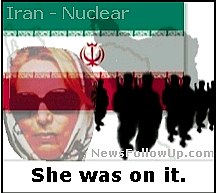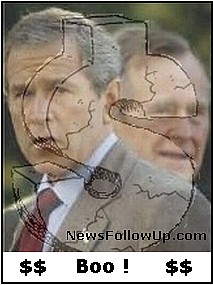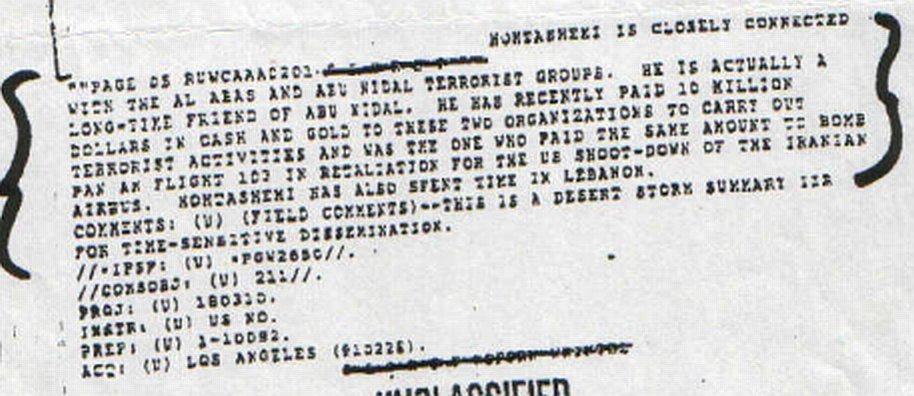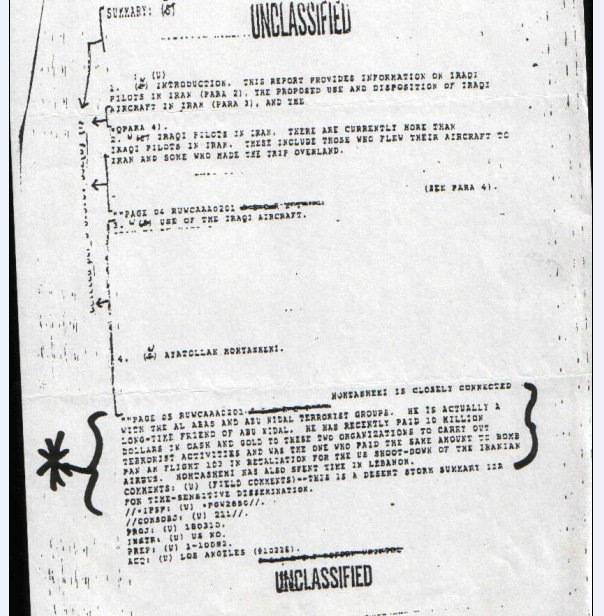| Analyzing the Impact of Preventive Strikes Against Iran’s Nuclear
Facilities September 4th, 2012 1800 K Street, NW Suite 400 Washington,
DC 20006 Phone: 1.202.775.3270 Fax: 1.202.775.3199 Email: [email protected]
Web: www.csis.org/burke/reports Anthony H. Cordesman, Arleigh A. Burke
Chair in Strategy and Abdullah Toukan 2 This report is based on a series
of reports by Dr. Anthony Cordesman on Iran, published by the Burke
Chair, CSIS. They can be found at: • Iran and the Gulf Military Balance
- Part One: Conventional and Asymmetric Forces, available on the CSIS
web site at http://csis.org/publication/reassessing-gulf-military-balance-part-oneconventional-
and-asymmetric-forces. • Iran and the Gulf Military Balance II: The
Missile and Nuclear Dimensions, available on the CSIS web site at
http://csis.org/publication/iran-and-gulf-military-balance-ii-missile-andnuclear-
dimensions. Professor Anthony H. Cordesman can be reached at [email protected]
Dr. Abdullah Toukan can be contacted at: [email protected]
Strategic Analysis and Global Risk Assessment (SAGRA) Center Abu Dhabi
UAE 9/6/2012 Page Executive Summary 4 US Perception of the Iranian
Threat 10 The Military Option to Deal with Iran’s Nuclear Program 15
Illustrative U.S. Preventive Military Strikes 18 Countering Iran’s Air
Defense 29 GCC vs Iran Airforce Comparison 33 Iran’s Missile Force 44
U.S. & GCC Defense against Iranian Ballistic Missiles 56 Countering
Iranian attacks on the Straits of Hormuz 64 Military Strike Israel:
Scenario I 81 Military Strike Israel: Scenario II 89 US Simulation
Results on the Consequences of an Israeli Strike 92 Appendix 95 3
Executive Summary Executive Summary • Over the past couple of months,
speculation about a U.S. or Israeli strike on Iran’s nuclear facilities
has made headlines around the globe. This report addresses how the U.S.
could take the lead in carrying out a preventive Military Strike against
Iran If all peaceful options have been exhausted and Iran has left no
other means to convince it to stop or change its course in pursuing
nuclear weapons . It also examines how the US could provide a defense
umbrella against any Iranian air and missile retaliation that would be
aimed at U.S. military targets and allies in the region, in particular
the GCC states. • A key question arises is what should the objectives of
a military strike be? To halt the Iranian nuclear program? To set it
back five years or for one year? This criteria is the key to defining
the force allocation required to achieve a successful mission against
Iran’s nuclear facilities. • The study shows that the initial strike
should be against key Iranian nuclear enrichment and research
facilities, ballistic missile basis located around the country, numerous
mobile ballistic missile launchers dispersed around Iran and main
ballistic missile production facilities. At the same time, it shows that
the payloads required to hit underground enrichment facilities with a
high level of damage, to carry out the scale of initial and follow-up
attacks, and providing resources such as near real time intelligence
required to detect and destroy other potentially lethal Iranian military
weapons, for instance ballistic missiles that could be used in a
retaliation, can only be carried out by the United States. • An initial
U.S. strike will require a large force allocation consisting of
Defensive Counterair and Offensive Counterair Operations, such as the
main Bomber Force, the Suppression of Enemy Air Defense System, Escort
aircraft for the protection of the Bombers, Electronic Warfare for
detection and jamming purposes, Fighter Sweep and Combat Air Patrol to
counter any air retaliation by Iran. • While such first strike will try
to be as effective as possible, the U.S. would be the only country that
has the air power, support capability, and mix of sea-air forces in the
Gulf to continue a sustained campaign over a period of time and restrike
after an initial battle damage assessment it is found that further
strike sorties are required. Several other key points are made in the
analysis: • The aging Iranian airforce will definitely be no match
against the U.S. and even the GCC airforces. In addition the Iranian Air
Defense systems do not have the Command Control Communications and
Intelligence required to detect, track and shoot down the US advanced
military combat aircraft. However U.S. planners will definitely take all
operational planning precautions necessary to ensure that both the
Iranian Airforce and Air Defense system are ineffective and all U.S.
combat aircraft have a high probability of survival throughout. • U.S.
officials are working with allies in the Gulf to develop the capability
to defeat the threat Iran poses to the Gulf, allied territory, and the
flow of trade and energy exports GCC countries worry that during a
crisis, Iran could try to prevent their ships from traversing the Strait
of Hormuz, cutting off their oil export business. • The only effective
counter-strike capability Iran has other than asymmetric warfare in the
Gulf, and the use of proxies like Hezbollah, is their Ballistic Missile
Force. A massive retaliation strike with whatever launching sites that
have survived the U.S. first strike could still cause quite a
considerable damage to the GCC states, in energy, finance and various
other critical infrastructure centers. • The U.S. is currently involved
in building a Defensive Shield against a massive Iranian Ballistic
Missile attack targeted at the GCC states. The defensive shield consists
of a Multi-Tier Ballistic Missile Defense System consisting of Terminal
High Altitude Air Defense (THAAD) and Patriot Advanced Capability,
PAC-3, missile systems supported with the most advanced Radar and
Command and Control facilities. • Ballistic missile defense (BMD)
systems have been provided to Kuwait, the United Arab Emirates, Qatar
and Oman, as well as stationing Aegis-equipped warships in the waters of
the Arabian Gulf. The U.S. has been developing an integrated early
warning radar system across the GCC states that could help U.S. and GCC
forces to quickly respond to an Iranian missile attack. . • Israel does
not have the capability to carry out preventive strikes that could do
more than delay Iran’s efforts for a year or two. • Finally, the fact
that US has the capability to carry out preventive strikes does not mean
it should not seek to negotiate an end to the threatening aspects of
Iran’s nuclear programs. The brief shows just how dangerous any war in
the Gulf could be to the world’s economy – although Iran is more
vulnerable than any of its Southern Gulf neighbors. • The U.S. also
needs its Gulf allies as key partners and must consider the “law of
unintended consequences.” Preventive military strikes could push the
presently volatile middle east region into a war with far reaching
global political, military, and economic consequences. US Preventive
Military Strike against Iranian Nuclear Facilities and Ballistic Missile
Bases Panchin Fordow Arak Natanz Esfahan Ballistic Missile Bases Tabriz
Bakhtaran Imam Ali Semnan Space & Missile Center Mashhad Airbase Bandar
Abbas Kuhestak Abu Musa Island • 5 Main Nuclear Facilities • 8 Ballistic
Missile Bases • 15 Ballistic Missile Production Facilities Combat
Aircraft Strike Force could be F-18’s off the U.S. 5th fleet, and F-15E
launched from Forward Area Bases. The Combat Aircraft can also perform
all Offensive Counterair Operations : Fighter Sweep, SEAD (suppression
of Enemy Air Defense), Interdiction and Escort. B-2 Mission Payload is
the B-57 A/B Mission Ordnance Penetrator (MOP). (Location of Facilities
source: NTI) Iran Saudi Arabia Iraq UAE Google Nuclear Facilities Kuwait
Qatar B-2 Bombers Strike Force Combat Aircraft Strike Force Two Tier
Theater Ballistic Missile Defense (TBMD) – THAAD & PAC 3 Endo and Exo-Atmospheric
Engagements using Shoot-Look-Shoot & Hit-to-Kill THAAD Launcher PAC-3
Launcher Upper Tier 1st Intercept Upper Tier 2nd Intercept
Shoot-Look-Shoot Lower Tier 1st Intercept Lower Tier 2nd Intercept UAE
Qatar IRAN Saudi Arabia TBMD System Defense against THAAD : UAE SRBMs
(<1000 km) and MRBMs (1000 - 3000 km) PAC-3 : UAE, Kuwait, Saudi Arabia
SRBMs (300 – 1000 km) Missile Launch Arabian Gulf Shoot-Look-Shoot
Qatar: Missile Early Warning Radar Mid-Course Phase Need to destroy as
many Missile Launchers as possible, pre-boost phase, in order to reduce
number of incoming warheads. US Perceptions of the Iranian Threat The
Military Power of Iran: The Official US View Annual Report on Military
Power of Iran Report by U.S. Defense Secretary Leon Panetta, June 2012
Iranian Grand Strategy, Security Strategy, and Military Strategy • There
has been no change to Iran's strategies over the past year. Iran's grand
strategy remains challenging U.S. influence while developing its
domestic capabilities to become the dominant power in the Middle East.
Iran's security strategy remains focused on deterring an attack, and it
continues to support governments and groups that oppose U,S. interests.
Diplomacy, economic leverage, and active sponsorship of terrorist and
insurgent groups, such as Lebanese Hizballah, Iraqi Shia groups, and the
Taliban, are tools Iran uses to increase its regional power. Iran's
principles of military strategy remain deterrence, asymmetrical
retaliation, and attrition warfare. • Iran seeks to increase its stature
by countering U.S. influence and expanding ties with regional actors
while advocating Islamic solidarity. Iran also desires to expand
economic and security agreements with other nations, particularly
members of the Nonaligned Movement in Latin America and Africa. • With
the advent of the Arab Spring in 2011, Iran saw opportunities to
increase its influence by supporting groups opposed to regimes in power,
particularly those perceived to support U.S. interests. Iran publicized
its belief that these popular, democratic uprisings were inspired by its
own 1979 Islamic Revolution. Source: Annual Report on Military Power of
Iran April 2012, Full Update June 29. Report by U.S. Defense Secretary
Leon Panetta for four congressional defense committees to comply with a
fiscal 2010 directive to provide an annual classified and unclassified
assessment of Iran’s military power.] http://media.bloomberg.com/bb/avfile/rNnp87SL4Ew8
[Provided by Bloomberg News : • Outside the Middle East Iran's efforts
to expand political, economic, and security ties with a range of
countries demonstrate Tehran' s desire to offset sanctions and
diplomatic isolation. Iran continues to use a multipronged strategy in
Iraq, including engagement with leaders across the political spectrum,
outreach to the Iraqi populace, and continued support to Iraqi Shia
militants and terrorists, such as Kataib Hizballah, Asaib Ahl al-Haq,
and the Promised Day Brigade, in the wake of the U.S. military
withdrawal. Iran provides money, weapons, training, and strategic and
operational guidance to Shia militias and terrorist groups to protect
and preserve Iran's security interests, including threatening the
residual U.S presence. In addition to providing arms and support, the
Islamic Revolutionary Guard Corps-Qods Force (IRGC-QF). is responsible
for training Iraqi militants and terrorists in Iran, sometimes using
Lebanese Hizballah instructors. • Iran continues to influence events in
Afghanistan through a multifaceted approach, including support for the
Karzai government while also supporting various insurgent groups. Tehran
maintains ties with Afghan leaders across the political spectrum and
continues to be involved in a number of humanitarian, economic, and
cultural outreach activities among the Afghan populace. Although
Tehran's support to the Taliban is inconsistent with their historic
enmity, it complements Iran's strategy of backing many groups to
maximize its influence while also undermining U.S. and North Atlantic
Treaty Organization (NATO) objectives by fomenting violence. • Iran has
been involved in Lebanon since the early days of the Islamic Republic,
especially seeking to expand ties with the country s large Shia
]population. The IRGC-QF continues to provide money, weapons, training,
and logistic support to Lebanese Hizballah and views the organization as
a key tool in its efforts to pressure Israel. • Since the beginning of
the Syrian unrest, Iran has supported President Bashar al-Asad while
downplaying the depth of this support in public. Iran's support to the
Asad regime has included military equipment and communications
assistance. Iran probably has provided military trainers to advise
Syrian security forces. Iran's Conventional Forces • Iran's conventional
military capabilities continue to improve, Naval forces are adding new
ships and submarines while expanding bases on the Gulf of Oman, the
Persian Gulf, and the Caspian Sea. In addition, Iran continues to expand
the breadth of its naval operations. Iran deploys naval ships into the
Gulf of Aden and Arabian Sea for counter piracy operations and in 2011
and early 2012 deployed two separate surface groups to the
Mediterranean. • In early 2012, the Islamic Revolutionary Guard Corps
Ground Resistance Forces (IRGCGRF) conducted a series of exercises in
northeastern and central Iran. The exercises, MARTYRS OF UNITY in the
northeast and SUPPORTERS OF VELAYAT and VALFAJR in central Iran, were
the first significant exercises conducted by the IRGCGRF since its
reorganization in 2008. The three exercises consisted of combined-arms
maneuvers and were meant to show the !RGCGRF's offensive and defensive
capabilities while offering limited training value for the participating
units. Iran's Unconventional Forces and Related Activities • Through the
IRGC-QF, Iran provides material support to terrorist or militant groups
such as HAMAS, Lebanese Hizballah, the Palestinian Islamic Jihad, the
Taliban, and Iraqi Shia groups. • In close cooperation with Syria, Iran
has provided Lebanese Hizballah with increasingly sophisticated weapons,
including a wide array of missiles and rockets that allow Hizballah to
launch weapons from deeper in Lebanon or to strike Israel. We judge that
the Iranian military trains Hizballah and Palestinian extremist groups
at camps throughout the region. • Iran provides funding and possibly
weapons to HAMAS and other Palestinian terrorists in the Gaza Strip.
Iranian Capabilities Related to Nuclear and Missile Forces • Iran is
developing a range of technical capabilities that could be applied to
the production of nuclear weapons if the decision is made to do so. It
continues to progress with its uranium enrichment at Natanz and the
newly operational Qom 'Enrichment Facility despite UN Security Council
sanctions, The International Atomic Energy Agency's (IAEAs) November
2011 report on Iran provided extensive evidence of past and possibly
ongoing Iranian nuclear weapons- related research and development work.
Iran has refused to address this evidence and denied repeated IAEA
requests for access to documents, personnel, and facilities. • At the
Natanz Underground Fuel Enrichment Plant, as of February 2012, Iran was
producing 3.5-percent lowenriched uranium hexafluoride (LEUF6) with
about 8,800 of the 9,150 installed IR-1l centrifuges. At the Natanz
Aboveground Pilot Fuel Enrichment Plant, Iran was producing 20-percent
LEUF6 with one interconnected cascade pair (328 centrifuges). About
6,200 empty IR-1 centrifuge casings were installed in that facility. At
the Qom Enrichment Facility (aka the Fordow Fuel Enrichment Plant), Iran
was producing 2O-percent LEUF6 with two pairs of interconnected cascades
(about 700 IR-1 centrifuges). Iran had filled the remainder of the
facility’s centrifuge capacity with 2,100 empty IR-1 centrifuge casings.
Iran declared the entire facility would be used for producing LEUF6,
abandoning previous plans to conduct centrifuge research and development
there. • Iran continued construction at the heavy-water Iran Nuclear
Research Reactor (IR-40) at Khondab in violation of UN resolutions.
Regular Iranian ballistic missile training continues throughout the
country. • Iran continues to develop ballistic missiles that can range
regional adversaries, Israel, and Eastern Europe, including an
extended-range variant of the Shahab-3 and a 2,0OO-km medium-range
ballistic missile, the Ashura. Beyond steady growth in its missile and
rocket inventories, Iran has boosted the lethality and effectiveness of
existing systems with accuracy improvements and new submunition
payloads. Iran’s missile force consists chiefly of mobile missile
launchers that are not tethered to specific physical launch positions.
Iran may be technically capable of flight testing an intercontinental
ballistic missile by 2015.” The Military Option to Deal with Iran’s
Nuclear Program US Extended Deterrence against the proliferation of WMD
and their delivery systems. • The U.S. sees Iran with its ballistic
missiles and potential of developing a nuclear weapon is a direct threat
to the GCC and also poses a threat to all friends and allies in the
Middle east region. • Iran has ignored U.S. warnings and has pressed
ahead with its uranium-enrichment program and has recently announced
that it is “self-sufficient” in nuclear technology. Iran claims that it
can domestically produce its own raw uranium for enrichment. • The U.S.
administration has stated that the full range of U.S. military
capability in both conventional and unconventional weapons will be
available and ready to be committed to defending its allies and friends
against any threat. The U.S. has started implementing a strategy to
influence the decision-making bodies in Iran as to the devastating
consequences if the GCC, and any other allies are attacked or
threatened. • Citing the Iranian threat, the Obama administration
shifted from the Bush administration’s plans to place missile-defense
sites in Poland and radar in the Czech Republic to an approach that
would in four phases place closer to Iran some Aegis-class Navy missile
defense vessels, ground radar and eventually land- based Navy Standard
Missile-3 interceptors • Should deterrence fail, the U.S. will have
already provided the GCC countries with Ballistic Missile Defense
Systems which have all the Early Warning and Command Control facilities.
This will limit the damage should they be attacked, and to enhance the
conventional deterrence capability of the GCC. In addition providing
modern technology combat aircraft that can be launched within a very
short window of time to block any first attack wave and to have the
capability to move the war into enemy territory, in the shortest time
period, using both Defensive and Offensive Counterair Missions. •
Ballistic missile defense (BMD) systems have been provided to four
countries on the Arabian Peninsula. BMD systems were provided to Kuwait,
the United Arab Emirates, Qatar and Oman, as well as stationing BMD
capable, Aegis-equipped warships in the waters of the Arabian Gulf. •
The U.S. has been developing an integrated early warning radar system
across the GCC states that could help U.S. and GCC forces to quickly
respond to an Iranian missile attack. The moves are intended to reassure
Gulf countries that they would be protected against possible offensive
action from Tehran. U.S. officials stressed the defensive nature of the
actions being taken throughout the region. • U.S. officials also are
working with allies in the Gulf to ensure freedom of navigation in the
region. Arab countries worry that during a crisis, Iran could try to
prevent their ships from traversing the Strait of Hormuz, cutting off
their oil export business. US officials have repeatedly insisted they
are keeping "all options on the table," which includes a military strike
option, when it comes to Iran. Secretary of State Clinton made the
following remarks with Saudi Arabian Foreign Minister on March 31, 2012
(US State Department). • “We believe strongly that, in addition to our
bilateral military cooperation between the United States and every
member nation of the GCC, we can do even more to defend the Gulf through
cooperation on ballistic missile defense. We began that conversation in
this forum today. Admiral Fox, the commander of the Fifth Fleet, made a
presentation outlining some of the challenges that we face when it comes
to ballistic missile defense. But we are committed to defending the Gulf
nations and we want it to be as effective as possible. • So we want to
begin expert discussions with our friends about what we can do to
enhance ballistic missile defense. There are some aspects of a ballistic
missile defense system that are already available, some of which have
already been deployed in the Gulf. But it’s the cooperation – it’s what
they call interoperability that we now need to really roll up our
sleeves and get to work on.” 17 Illustrative U.S. Preventive Military
Strikes 18 • The U.S. is the only country that can launch a successful
Military Strike, if all peaceful options have been exhausted and Iran
has left no other means to convince it to stop or change its course in
pursuing Nuclear Weapons. The U.S. should alone determine what the
timeline could be if Iran does pursue the path to develop nuclear
weapons. • The question arises is what would the objectives of a
military strike be? To pull the Iranian nuclear program back 5 years or
delay it for 1 year? This criteria will define the force allocation
required to achieve a successful mission against Iran’s nuclear
facilities. We point out that it is not a simple mission of bombers
flying in and out of Iran, this is a complicated Offensive Air Strike
that will involve many aircraft, each with its own role, such as Combat
Aircarft whose role is to suppress enemy air defenses along the way,
aircraft that fly fighter escort with the bombers, aircraft that carry
specialized electronic warfare equipment to jam enemy radars and
communications., plus probably air-to-air refueling along the way in and
out of Iran. • Depending on the forces allocated and duration of air
strikes, it is unlikely that an air campaign alone could alone terminate
Iran’s program. The possibility of dispersed facilities complicates any
assessment of a potential mission success, making it unclear what the
ultimate effect of a strike would be on Iran’s nuclear facilities. • The
U.S. is aware that the action of a military strike could be
destabilizing for the entire Middle East region and potentially generate
a nuclear weapons race in that part of the world," Admiral Michael
Mullen, the chairman of the Joint Chiefs of Staff, told CNN. "I think an
attack would also be, by us or by anybody else, be very destabilizing.
Military Risks in Strike against Iran’s Nuclear Facilities 19
Illustrative US Strike Mission • B-2 bombers out of Diego Garcia, each
carrying 2 GBU-57 MOP bombs. • Mission can be achieved with a high
success rate also maintaining a sustained strike over a couple of days.
• B-2 bombers escorted by F-18s from the 5th fleet stationed in the Gulf
area, or F-15Es and F-16Cs from forward area air bases. • United States
and Western allies considered to be the only countries involved, no GCC
or any Arab country involvement and especially no-Israeli direct
involvement. • Still though, Iran most probably will accuse Israel to be
part of the Strike and will try to retaliate, either by launching a
Ballistic Missile on Israel carrying conventional or WMD (chemical,
biological, radiological) and activating Hezbullah to launch cross
border attacks against Israel. • Iran would also try to attack any U.S.
military airbases that are active in the Gulf even if they are stationed
in GCC countries. • If Iran attacks any of the GCC countries, then they
will have the right to self-defense. In addition the whole Arab Middle
East will not accept an Iranian attack on any of the GCC countries. 20
The B-2 Bomber Primary Function Multi role heavy bomber Engines: Four GE
F-118-GE-100 engines, each with a thrust of 17,300 pounds (7,847 kg)
Speed, Cruise: High subsonic Ceiling: 50,000 ft (15,000 meters) Weight
Takeoff, (typical): 335,500 – 350,000 pounds (152,600 – 159,000 kg)
Weight, Empty (typical): 125,000 – 160,000 pounds Range: 6,000 nmi
(9,600 km), unrefueled range for a Hi-Lo-Hi mission with 16 B61 nuclear
free-fall bombs 10,000 miles with one aerial refueling. Payload: 40,000
pounds (18,000 kg) Crew: Two pilots Current Armament: Nuclear: 16 B61,
16 B83 Conventional: 80 MK82 (500lb), 16 MK84 (2000lb), 34-36 CBU-87,
34-36 CBU- 89, 34-36 CBU-97 Precision: 216 GBU-39 SDB (250 lb), 80
GBU-30 JDAM (500 lb), 16 GBU-32 JDAM (2000 lb), GBU-27, GBU-28, GBU-36,
GBU-37, AGM-154 HSOW, 8-16 AGM-137 TSSAM, 2 MOP / DSHTW/ Big BLU
(Source: http://www.GlobalSecurity.org/wmd/systems/b-2-s[ecs.html) 21
GBU-57A/B Massive Ordnance Penetrator (MOP) Specifications Weight, total
13,600 kg (slightly less than 30,000 pounds) Weight, explosive 2,700 kg
(6,000 lb) Length 6m / 20.5 feet Diameter 31.5 in diameter Control
Short-span wings and trellis-type tail Penetration 60 meters (200ft)
through 5,000 psi reinforced concrete 40 meters (125 ft) through
moderately hard rock 8 meters (25 feet) through 10,000 psi reinforced
concrete Contractors Boeing, Northrop Grumman Platforms B-52, B2
Guidance GPS aided Inertial Navigation System • In July 2009,
verification of equipment required to integrate the MOP on the B-2 was
complete - the hardware that holds the MOP inside the weapons bay. The
MOP is a GPS-guided weapon containing more than 5,300 pounds of
conventional explosives inside a 20.5 ft long bomb body of hardened
steel. It is designed to penetrate dirt, rock and reinforced concrete to
reach enemy bunker or tunnel installations. The B-2 will be capable of
carrying two MOPs, one in each weapons bay. • The B-2 currently carries
up to 40,000 pounds of conventional ordnance. For example, it can
deliver 80 independently targeted 500-lb class bombs from its smart bomb
rack assembly; or up to 16 2,000-lb class weapons from its rotary
launcher. Integration of the MOP on the B-2 is the latest in a series of
modernization programs that Northrop Grumman and its subcontractors have
undertaken with the Air Force to ensure that the aircraft remains fully
capable against evolving threats. 22 (Source: http://www.nti.org/country-profiles/iran/delivery-systems/)
Priority Targets in addition to Iran’s Main Nuclear Nuclear Facilities
U.S. Military Strike Force Allocation against Iran’s Nuclear and
Ballistic Facilities Offensive Counterair (OCA) Mission Performance
Criteria and Mission Parameters: • A damage performance criteria above
75% for each target, nuclear and missile, resulting in a delay of at
least 5 to 10 years in Iran’s Nuclear Program, and substantially
weakening Iran’s ballistic missile retaliatory capability. • Two
aircraft are allocated to each target to maximize the damage on First
Strike. • Destroying the maximum number of Missile Bases, Mobile
Launchers and Production Facilities during (boost Phase) or before
Launch, thereby reducing the number of incoming missiles (warheads) and
also reducing the number of shots defense needs to take at each Incoming
warhead. Iran Target Number of Targets Aircraft Allocated Main Nuclear 5
Facilities 2 A/C per target resulting in 10 B-2 Bombers Missiles Bases 8
Bases 2 A/C per base resulting in 16 Strike A/C Missile Production 15
Facilities 2 A/C per target resulting in 30 Strike A/C Mobile Missile
Launchers Assuming 22 Launchers in various locations 2 A/C per mobile
launcher resulting in 44 A/C TOTAL 50 10 B-2 Bombers 90 Strike Aircraft
= 100 25 En Route SEAD Attack Operations Offensive Counterair Missions (OCA)
CAP (Source: Counterair Operations USAF AFDD 2-1.1 October 1, 2008)
Attack Operations • Attack operations are intended to destroy, disrupt,
or degrade counterair targets on the ground. •These missions are
directed against enemy: Ballistic Missile Sites Airfields Command
Control and their support infrastructure: Suppression of Enemy Air
Defenses (SEAD) SEAD is an OCA mission designed to neutralize, destroy,
or degrade enemy surface-based air defenses by destructive or disruptive
means. Fighter Sweep: An offensive mission by fighter aircraft to seek
and destroy enemy aircraft or targets of opportunity in a designated
area. Escorts: Escorts are aircraft assigned to protect other aircraft
during a mission. Escort missions are flown over enemy territory to
target and engage enemy aircraft and air defense systems. Decrease in
Aircraft Required in an Air-to-Ground Strike Mission: • Improved Weapons
Accuracy • Increased Survivability • Larger Payload Additional
requirements to increase Mission Effectiveness The effectiveness of OCA
operations depends on the availability of certain resources. System
capabilities are influenced by the situation, threats, weather, and
available intelligence. The following are some of the resources used to
conduct OCA: Aircraft: Fighter and bomber aircraft provide the bulk of
the weapon systems for OCA operations. Other types of aircraft and
weapon systems are often critical enablers of counterair operations
(e.g., electronic attack, electronic protection, and air refueling
aircraft). Missiles: These weapons include surface-to-surface,
air-to-surface, and air-to-air missiles, as well as air-, land-, and
sealaunched cruise missiles. Many of these weapons have long ranges and
some have very quick reaction times. These weapon systems can eliminate
or reduce the risk of harm to friendly forces by destroying enemy
systems in the air and on the ground. ISR Systems: ISR systems and
resources may be used in counterair operations to provide intelligence,
surveillance, reconnaissance, deception, and other effects against enemy
forces and air defense systems. These activities include the use of
airborne, space-borne, and ground (e.g., human intelligence) assets.
(Source: Counterair Operations USAF AFDD 2-1.1 October 1, 2008) Unmanned
Aircraft Systems (UAS): UAS may be used in counterair operations to
provide ISR, deception, jamming, harassment, or destruction of enemy
forces and air defense systems. These systems may be preprogrammed or
remotely piloted. They provide valuable intelligence to friendly forces
and may now be used to attack some targets either too dangerous or risky
for manned aircraft or where manned aircraft are not present or
available to respond. They may also be used to help provide persistent
air presence over enemy forces in situations where this may have
important psychological effects upon an adversary (as part of OCA or
other operations) if synergistically tasked to help provide persistent
presence over adversary forces. Special Operations Forces (SOF): SOF can
conduct direct action missions, special reconnaissance, and provide
terminal guidance for attacks against valuable enemy targets. Planners
in the AOC coordinate with the special operations liaison element to
coordinate the use of special operations assets in support of the
counterair mission. C2 Systems: These systems enhance OCA operations by
providing early warning, intelligence, identification, and targeting
data, as well as C2 of friendly forces. (Source: Counterair Operations
USAF AFDD 2-1.1 October 1, 2008) US Preventive Military Strike against
Iranian Nuclear Facilities and Ballistic Missile Bases Panchin Fordow
Arak Natanz Esfahan Ballistic Missile Bases Tabriz Bakhtaran Imam Ali
Semnan Space & Missile Center Mashhad Airbase Bandar Abbas Kuhestak Abu
Musa Island • 5 Main Nuclear Facilities • 8 Ballistic Missile Bases • 15
Ballistic Missile Production Facilities Combat Aircraft Strike Force
could be F-18’s off the U.S. 5th fleet, and F-15E launched from Forward
Area Bases. The Combat Aircraft can also perform all Offensive
Counterair Operations : Fighter Sweep, SEAD (suppression of Enemy Air
Defense), Interdiction and Escort. B-2 Mission Payload is the B-57 A/B
Mission Ordnance Penetrator (MOP). (Location of Facilities source: NTI)
Iran Saudi Arabia Iraq UAE Google Nuclear Facilities Kuwait Qatar B-2
Bombers Strike Force Combat Aircraft Strike Force Countering Iran’s Air
Defense Iran’s Current Land Based Air Defense Systems • Iran has
extensive surface-to-air missile assets, but most are obsolete or
obsolescent. Iran’s systems are poorly netted, have significant gaps and
problems in their radar and sensor coverage and modernization, and a
number of its systems are vulnerable to electronic warfare •U.S. never
delivered integrated system before fall of Shah so Iran never had a
fully functioning air defense system. • Iran has made many statements
that it has upgraded and modernized many of the components of such its
Air Defense systems using Russian, Chinese, US, European, and
Iranian-designed and made equipment. But Iran does not have the design
and manufacturing capability to create truly modern system, one that is
immune to electronic warfare, and one that can function without become
tactically vulnerable to antiradiation weapons and other forms of active
“suppression of enemy air defense” (SEAD) systems. •Only modern
short-range point defense system is TOR-M. Other short-range systems mix
of older Russian system, SHORADs (Short Range Air Defense), and aging –
possible inactive British and French systems. • Medium to long-range
systems are low capability or obsolescent. Iran has some 150 HAWKS and
IHAWKs do not have capable ECM. Date back to 1960s and 1970s. It claims
to be able to produce its own IHAWK missiles. Has various versions of
SA-2 obsolete. • Radar sensor and battle management/C4I systems have
major limitations. • Regardless of how much Iran states that it has made
progress, it will still be vulnerable to the advanced technology U.S.
combat aircraft as well as the electronic warfare and defense
suppression weapon systems. This will give the U.S. Strike Force the
freedom, if required after the first strike, to conduct a sustained
campaign of strikes over a few days. (Source: Anthony Cordesman CSIS) 30
Gulf Land-Based Air Defense Systems in 2008 Country Major SAM Light SAM
AA Gun Bahrain (8) IHAWK (60) RBS-70 (18) FIM 92A Stinger (7) Crotale
(26) Guns (15) Orlikon 35mm (12) L/70 40mm Iran (16/150) IHAWK (3/10)
SA-5 (45) SA-2 Guideline SA-7/14/16 HQ-7 (29) SA-15; Some QW-1 Misaq
(29) TOR-M1; Some HN-5 (30) Rapier; Some FM-80 (Ch Crotale) 15 Tigercat;
Some FIM-92A Stinger (1,700) Guns ZSU-23-4 23mm ZPU-2/4 23mm ZU-23 23mm
M-1939 37mm S-60 57mm Kuwait (4/24) IHAWK Phase III (5) Patriot PAC-2
(6/12) Aspide (48) Starbust 12 Oerlikon 35mm Oman None Blowpipe; (2)
Mistral SP (34) SA-7; (6) Blindfire (20) Javelin; (40) Rapier S713
Martello (26) Guns (4) ZU-23-2 23mm (10) GDF-(x)5 Skyguard 35mm (12)
L-60 40mm Qatar None (10) Blowpipe (12) FIM-92A Stinger (9) Roland II
(24) Mistral (20) SA-7 Saudi Arabia (16/128) IHAWK (4-6/16-24) Patriot
(17/141) Shahine Mobile (2-4/160) PAC-2 Launchers (17) ANA/FPS-117 Radar
(73/68) Crotale Shahine (40) Crotale (500) Stinger (ARMY) (500) Mistral
(ADF) (500) FIM-43 Redeye (ARMY) (500) Redeye (ADF) (73-141) Shahine
Static (500) FIM-92A Stinger (ARMY) (400) FIM-92A Avenger (ADF) (1,220)
Guns (92) M-163 Vulcan 20mm (30) N-167 Vulcan 20mm (NG) (850) AMX-30SA
30mm (128) GDF Orlikon 35mm (150) L-70 40mm (store) (130) M-2 90mm (NG)
UAE (2/31) IHAWK 20+ Blowpipe (20) Mistral Some Rapier/Crotale/
RB-70/Javelin/SA- 18 (62) Guns (42) M-3VDA 20mm SP (20) GCF-BM2 30mm
(Source: Iranian Weapons of Mass Destruction. Anthony Cordesman CSIS) 31
Air Defense System Associated Early Warning/Acquisition Radars
Associated Tracking & Guidance Radars Missile Ranges (km) Altitude (ft)
In Service Date SA-2 Spoon Rest D (P-18) Flat Face A (P-15) Fansong A/B
Max (km): 40 Min (km) : 8 Altitude (ft): 3,000 to 90,000 1971 Upgraded
SA-3 Flat Face B (P-19) Squat Eye Low Blow Max (km) : 30 Min (km) : 6
Altitude (ft): 150 to 160,000 1971 SA-6 Long Track (P-40) Height Finder:
Thin Skin B (PRV-9) Straight Flush Max (km): 24 Min (km) : 4 Altitude
(ft): 50 to 45,000 1973 SA-8 Flat Face B (P-19) Long Track (P-40) Height
Finder: Thin Skin B (PRV-9) Land Roll Max (km) : 15 Min (km) : 0.2
Altitude (ft): 40 to 40,000 1982 SA-5 Back Trap (P-80) Tall King C
(P-14) Spoon Rest D (P-18) Height Finder: Odd pair (PRV-13) Odd Group
(PRV-16) Square Pair Max (km) : 250 Min (km) : 20 Altitude (ft): 1,500
to 130,000 1983 IHAWK AN/MPQ-50 AN/MPQ-55(PIP II)/62 (PIP III) Range
only Radar AN/MPQ-57 (PIP II)/61 (PIP III) Max (km): 35 Min (km): 3
Altitude (ft): 0 to 55,000 ft 1971 Patriot PAC-2 AN/MPQ-53 Phased-Array
Radar Carries out Search, target detection, track and identification,
missile tracking and ECCM functions AN/MSQ-104 Engagement Control
Station (ECS) Max (km): 70 Min (km): 3 Altitude (ft): 80,000 1990 Medium
to Long Range Surface To Air Missile Systems 32 (Source: Iranian Weapons
of Mass Destruction. Anthony Cordesman CSIS) GCC vs Iranian Airforce
Comparison • Iran’s most advanced fighters consist of a small number of
export versions of the Su-24 and MiG-29, whose avionics lag far behind
their Russian counterparts. It is reported that Iran has less than 30
export versions of MiG-29, some not operational. These limits to Iran’s
air force are particularly important as Iran has air bases that are only
a few minutes flight time from critical targets in the Gulf and in the
coastal areas of the southern Gulf states. They are also important
because Iran’s weaknesses in air-to-air combat, and its weaknesses in
surface-to-air missile defense which are described shortly, leave it
highly vulnerable to any US attack. • Iran claims to have modernized the
avionics on some of these aircraft, and to have adapted its F-14s to
carry the Hawk air-to-surface missile as a long-range air-to-air missile
to compensate for the fact its F-14s were sabotaged during the fall of
the Shah and cannot make effective use of Phoenix missiles – which in
any case are long beyond their useful life. It also claims to have
created electronic warfare aircraft and to have modernized the avionics
on its 3 PF-3 Orion maritime patrol aircraft – which are as close to an
AWACs/airborne warning and control aircraft as Iran has. It also has
claimed to have a mix of unmanned combat aerial vehicles (UCAVs and UAVs)
it can use to make up for some of the limitation in its aircraft. • The
GCC have been planning their defenses so as to provide a military
deterrent sufficient to make any direct confrontation as costly as
possible to Iran or any other adversary. It is in this deterrent role
that lies the ultimate rationale for any GCC Joint Defense Pact and
Cooperation. • Two main considerations underlying the choice of a
Military Doctrine by the GCC states have been: Balance of Forces and
Strategic Depth. In particular for the Arabian Gulf “front line states”
Kuwait, Bahrain, Qatar, UAE and Oman, the main concern would be
strategic depth to an Iranian attack. (Source: Anthony Cordesman CSIS) •
Defense Performance Criteria should be a 85% Probability that the
defense shoots down all the incoming threat aircraft; this also means an
85% of zero leakage. Furthermore a 90% Probability that incoming are
incoming threat aircraft are successfully detected early and tracked by
the GCC Air Defense. • Lack of Strategic Depth results in limitations on
the area of operational maneuverability during conflict, time to
respond, and an increase in the vulnerability of vital strategic
critical infrastructure economic centers due to the proximity to the
borders. Saudi Arabia is be the only state that has strategic depth, and
is looked upon to play a pivotal role in the Security Arrangements of
the Gulf and the Arab Israeli conflict. Saudi Arabia’s oil resources,
population and strategic depth make it a major and essential participant
in any regional security arrangements or conflict in the Gulf region. •
When transformed into an operational doctrine, the GCC states would base
their Force Structure Planning on: Defensible Borders. Borders which can
be defended without a pre-emptive initiative, and the parallel
capability to take the war to the enemy and to fight on enemy territory.
• The requirement would be to enhance the conventional military ability
for the GCC states consisting of four major components: Force Structure;
Modernization; Readiness; Sustainability. In addition it would include
developing an asymmetric warfare capability. The total GCC Air Power is
428 combat aircraft, in assuming only 75% are operationally ready
(full-mission capable), the total available force will then be 320 and
with a sortie rate of 3 per aircraft per day the total number of sorties
generated would be 960. Whereas for Iran, a total of 158 aircraft with
an operational readiness rate of 60%, the available combat force will be
95, and with 2 sorties per aircraft per day the total sorties generated
will come to 190. The 6:1 ratio of sorties generated projects the
weakness of the Iranian Airforce vs the those of the GCC countries. • By
following the guidelines of the USAF Doctrine manuals in the missions
needed for Offensive Counterair, Defensive Counterair as well as
Counterland Operations, the 6:1 ratio clearly implies that there is a
substantial advantage in favor of the GCC Airforces achieving the
specified wartime objective of winning an air war or destroying a target
set.
Iran Airforce Tactical Fighter Capabilities - 2012 Type No
Operational Readiness (%) Force Available Total Sortie Per Day
Postulated Employment MiG-29A 25 60 15 30 Air Defense/Escort/FS/BAS
Su-25 13 60 8 16 CAS/BI/Deep Strike SU-24 30 60 18 36 CAS/BI/Deep Strike
F-14 25 60 15 30 Air Defense/FS F-4E/D 65 69 39 78 CAS/BI/Deep
Strike/SEAD Total 158 95 190 BAS: Battlefield Air Superiority CAS: Close
Air Support BI: Battlefield Interdiction DS: Defense Suppression FS:
Fighter Sweep Sustained Conditions : 12 hr Operational Day 18 hr
Maintenance Day 2 Sorties per Aircraft per day 37
Type Order of Battle Operational Ready % Force Available Force Total
Sorties per Day Postulated Employment Tornado IDS Saudi Arabia: 25 75 19
57 Deep Strike Typhoon Saudi Arabia: 22 75 16 48 FS, BAS, AD, Escort
Mirage 2000 UAE: 62 Qatar: 12 (Total: 74) 75 UAE: 46 Qatar: 9 (Total:
55) UAE: 138 Qatar: 27 (Total: 165) FS, BAS, AD, Escort F-18 Kuwait: 39
75 29 87 FS, BAS, AD, Escort, CAS, BI, SEAD F-16C/D Bahrain: 21 Oman: 12
UAE: 80 (Total: 113) 75 Bahrain: 16 Oman: 9 UAE: 60 (Total: 85) Bahrain:
48 Oman: 27 UAE: 180 (Total: 255) FS,BAS, AD, Escort, CAS, BI F-15C/D
Saudi Arabia: 84 75 63 189 FS, BAS, AD, Escort, CAS, BI F-15S Saudi
Arabia: 71 75 53 160 Deep Strike, FS, AD, Escort, CAS, BI Total 428 320
960 GCC Airforce Tactical Fighter Capabilities - 2012 Sustained
Conditions : 12 hr Operational Day 18 hr Maintenance Day 3 Sorties per
aircraft per day FS: Fighter Sweep, BAS: Battlefield Air Superiority,
AD: Air Defense, CAS: Close Air Support (Air to Ground Role), BI: Battle
Field Interdiction (Air to Ground Role) SEAD: Suppression of Enemy Air
Defense 39 40 Defensive Counterair Operations Combat Air Patrol Strip
Launched Intercept Mission : Defense of Border from Enemy Intrusion.
Objective : Provide Airspace Surveillance over selected corridor and
Intercept. Assumptions & Conditions: - Corridor Width & Distance from
Base - Threat Operations - Duration of Coverage AWACS Ground Control
Intercept Radar (Source: Counterair Operations USAF AFDD 2-1.1 October
1, 2008) Central Factors in Threat Engagement Analysis: • C4I (Command
Control Communications Computing and Intelligence) and the maximum Air
Defense engagement force • The Operational Readiness of the forces
resulting in the combat forces available as Full Mission Capable. • The
maximum usable Ground/Strip Launched Interceptor force and Combat Air
Patrol operations. The Maximum Strip Launched Interceptors is highly
sensitive to the C4I time delay and the response time. • In the Alert
Phase of air operations, the combat ready assets are assigned to the
Ground Launched Intercept and Combat Air Operations (CAP). Radar
Coverage Threat Aircraft Corridor Width Typical GCC Combat Air Patrol
Mission Aircraft Required on CAP Stations Number of Aircraft to Support
Each CAP Station x = Total Aircraft Required (Number of CAP Stations) x
2 Operational Day 12 hrs (Sortie Rate) x (Loiter Time) (Aircraft
Required on CAP) x (Aircraft Required to Support CAP) x = 3 x 2 = 6 x
12/ (3 x 2) = 2 = 6 x 2 = 14 IRAN Qatar UAE OMAN Saudi Arabia CAP CAP
CAP Decreasing the Number of Aircraft Required Entails: • Increasing
Aircraft Sortie Rate & Time on Station (Loiter Time) • Increasing
Aircraft Radar Range & Time on Station (Loiter Time) 42 What Iran lacks
in Air Power: The following are some general criteria that would be
required for Iran to try and maintain a technological and qualitative
edge over the GCC Airforces: • Aircraft: Multi-mission capability. High
Operational Readiness/Full Mission Capable state and high sortie rates.
All weather day / night operational capability Quick response / ground
launched interceptors against incoming intruders. High Endurance.
Airborne Electronic Warfare (ESM/ECM/ECCM) survivability Detect track
and engage multiple mobile ground targets as well as Hard and Deeply
Buried Targets (HDBTs). Rapidly destroy advanced air defense systems.
Capable of carrying out deep strike missions. Short C4I Early Warning
delay time due to having antiquated System, semi-automated man in the
loop, giving rise to long Response / Scramble Time by Combat Aircraft •
Air to Air Missiles: Aircraft to be capable of multiple target
engagement. Fire and Forget/Launch and leave with high single shot kill
capability. Good target discrimination and enhanced resistance to
countermeasures. Increase in range of firing missile at the same time
shortening the flight time to the target. low Loss Exchange Ratio in a
Closing / BVR Environment and Visual Engagement Environment. • •Air to
Ground: Weapons that serve as an effective force multiplier. Stand-off
capability, operating from ranges outside enemy point defenses. Low and
high altitude launches. Preserve crew and aircraft survivability
Effective against a wide array of land and sea targets with high single
shot kill probability. Weapons that employ launch and leave with high
accuracy (small CEP). Capable of day/night and adverse weather
conditions Iran’s Missile Forces • There is little disagreement that
Iran’s actions pose a potential threat, but there is far less agreement
over the nature, scale and timing of this threat. US, European, Gulf,
and Israeli policymakers and experts agree that Iran possesses a large
and growing missile force, with some missiles capable of hitting Israel,
and Europe. They agree that Iran has begun developing longer range and
solid-fuel missiles. At the same time, the Iranian program is in flux
and many of Iran’s missile systems are still in a development phase
where their range, accuracy, warhead, and reliability are impossible to
predict. • Iran has been developing ballistic missile capabilities based
on Russian, North Korean, and Chinese technology or weapons systems
since the early 1980s. Iran currently possesses the largest ballistic
missile inventory in the Middle East, and the country’s military and
scientific establishments are working to increase the sophistication,
scale, and reach of its missiles. • Iran sees its missile capabilities
as a way to compensate for its shortcomings in conventional forces, as
well as a means to strike at high-value targets with little warning,
such as population centers, and Western and Western-backed forces in the
region, including US bases in the Gulf. As such, ballistic missiles play
an integral role in Iran’s asymmetric warfare doctrine. Given the
emphasis Iran places on its missile program, it is clear that Iran
considers its ballistic missile arsenal among its most important assets
as both a deterrent to attack and leverage over other regional players.
• There is no agreement as to when Iran may acquire missiles with homing
warheads and the kind of terminal guidance that can hit point targets
effectively with conventional warheads. There is no agreement on the
reliability and accuracy of Iran’s missiles under operational
conditions, there is no agreement on Iran’s ability to deploy systems
with countermeasures to missile defenses. There is no agreement on when
Iran might deploy a fully function nuclear warhead. And, there is no
agreement on the future size, character, and basing mode of Iran’s
missile forces once its long-range systems are deployed in strength.
Deterrence and Active Defense Risks Iran’s Missile Program (Reference:
Anthony Cordesman and Alexander Wilner. CSIS “Iran and the Gulf Military
Balance – I and II.) 45 Iran Military Doctrine: • Since Iran presently
does not have access to high technology military weapon systems, it will
need to develop all ranges of Ballistic Missiles to compensate for its
deficiencies in conventional forces. • Iran has no problem in Strategic
Depth, can be an advantage fighting in and over familiar territory.
Force Structure Planning based on: o High attrition rate inflicted on
adversary civilians o In depth defenses, as Iran has the strategic depth
Tactical Ballistic Missiles Threat: • Iran’s ballistic missiles cover
the complete spectrum range from150 km up to 5,500 km, the Short,
Medium, and Intermediate Ranges of Ballistic Missiles. Iran believes
that these will compensate for any deficiencies in its Air Power. •
Ballistic Missiles can be used with success against Soft Targets, in
open areas and cities to inflict maximum human casualties and create
terror. In essence what is considered as a major component in Asymmetric
Warfare in the form of high civilian casualties. • This arsenal of
Ballistic Missiles possessed by Iran has been declared to be for
defensive purposes against any foreign invasion, in particular against
the U.S. • However, it has become very clear that it is an arsenal that
is intended to inflict maximum casualties and damage, in essence a major
component for Asymmetric Warfare in the form of high attrition and
defenses in depth and to compensate for any deficiencies in its Air
Power. SRBM : Short Range Ballistic Missile MRBM : Medium Range
Ballistic Missile IRBM : Intermediate Range Ballistic Missile ICBM :
Intercontinental Ballistic Missile
( Reference: Theodre Postol, “A Technical Assessment of Iran’s
Ballistic Missile Program” May 6, 2009. Technical Addendum to the Joint
Threat Assessment on Iran’s Nuclear And Missile Potential.) ( Reference:
Theodre Postol, “A Technical Assessment of Iran’s Ballistic Missile
Program” May 6, 2009. Technical Addendum to the Joint Threat Assessment
on Iran’s Nuclear And Missile Potential.) ( Reference: Theodre Postol,
“A Technical Assessment of Iran’s Ballistic Missile Program” May 6,
2009. Technical Addendum to the Joint Threat Assessment on Iran’s
Nuclear And Missile Potential.) ( Reference: Theodre Postol, “A
Technical Assessment of Iran’s Ballistic Missile Program” May 6, 2009.
Technical Addendum to the Joint Threat Assessment on Iran’s Nuclear And
Missile Potential.) Shahab-1 Shahab-2 Shahab-3 Shahab-4 Class: SRBM SRBM
MRBM MRBM Range (km): 300 500 1,300 2,000 Payload (kg): 1,100 600 650
1,000 Iran Shahab Ballistic Missiles Range vs Payload IRAN (Reference:
Ballistic Missile Defense Review Report. BMDR DoD February 2010)
U.S. & GCC Defense against Iranian Ballistic Missiles
Sea Based Air Defenses The U.S. Navy’s Role in Missile Defense
Network Role of the U.S. Navy Aegis System: • Will provide an efficient
and highly mobile sea-based defense against Short and Medium – Range
Ballistic Missiles in their midcourse phase. • The system will allow the
BMD Command to move its defense capabilities close to the enemy sites. •
The system will have the Engagement & Long Range Tracking Capability •
Intercepting Short to Medium Range Ballistic Missiles in the midcourse
phase of the flight with Standard Missile – 3. • Serves as a forward
deployed sensor, providing early warning and long range search & track
capabilities for ICBMs and IRBMs. Contributions: •Will extend the battle
space of the BMDs and contribute to an integrated layered defense. The
Naval Aegis system extends the range of the Ground Missile defense (GMD)
element by providing reliable track data used to calculate firing
solutions. • Aegis BMD will coordinate engagements of short and medium
range ballistic missiles with terminal missile defense systems. • As
tracking information is shared among these systems, the BMDS will have
the opportunity to follow the engagement of a target during the
midcourse segment with coordinated terminal engagements. Sea Based Radar
Sea Based Radar Aegis Ballistic Missile 3 (Source: Missile Defense
Agency. (MDA) Department of Defense. “Testing Building Confidence”, 2009
) 58 Country TBMD System UAE • The UAE is so far the first GCC country
to buy the Terminal High Altitude Air Defense (THAAD) missile system. •
On Dec 31, 2011 Pentagon announced that the UAE will be buying 2 full
THAAD batteries, 96 missiles, 2 Raytheon AN/TPY-2 radars, and 30 years
of spare parts. Total Value $3.34 billion. • In 2008 the UAE ordered
Patriot PAC-3: 10 fire units, 172 missiles, First delivery 2009. Kuwait
July 2012, Pentagon informed Congress of a plan to sell Kuwait $4.2
billion in weapon systems, including 60 PAC-3 missiles, 20 launching
platforms and 4 radars. This will be in addition to the 350 Patriot
missiles bought between 2007 and 2010. In 1992, Kuwait bought 210 of the
earlier generation Patriots and 25 launchers. Kuwait bought a further
140 more in 2007. Saudi Arabia In 2011 Saudi Arabia signed a $1.7
billion US contract to upgrade it’s Patriot anti-missile system. Qatar
The U.S. is building a Missile Warning Facility in Qatar that would
utilize an AN/TPY-2-X Band Radar. (Source: Anthony Cordesman and
Alexander Wilner, “Iran and the Gulf Military Balance -1” July 11, 2012)
Two Tier Theater Ballistic Missile Defense (TBMD) – THAAD & PAC 3 Endo
and Exo-Atmospheric Engagements using Shoot-Look-Shoot Hit-to-Kill THAAD
Launcher PAC-3 Launcher Upper Tier 1st Intercept Upper Tier 2nd
Intercept Shoot-Look-Shoot Lower Tier 1st Intercept Lower Tier 2nd
Intercept UAE Qatar IRAN Saudi Arabia TBMD System Defense against THAAD
: UAE SRBMs (<1000 km) and MRBMs (1000 - 3000 km) PAC-3 : UAE, Kuwait,
Saudi Arabia SRBMs (300 – 1000 km) Missile Launch Arabian Gulf
Shoot-Look-Shoot Qatar: Missile Early Warning Radar Mid-Course Phase
Need to destroy as many Missile Launchers as possible, pre-boost phase,
in order to reduce number of incoming warheads. • Defense Performance
Criteria: 85% Probability that the defense shoots down all the incoming
missiles (warheads); 85% of zero leakage. • 99% Probability that
incoming missiles (warheads) are successfully tracked by the defense.
Probability that an incoming missile (warhead) is destroyed Number of
shots that must be taken at each incoming missile (warhead) to achieve
the defense performance criteria. Defense Required to meet Performance
Criteria Destroying as many Ballistic Missile Launchers during (boost
Phase) or before Launch: • Decreases the number of incoming missiles
(warheads) and also • Decreases number of shots defense needs to take at
each Incoming warhead. THEATER BALLISTIC MISSILE DEFENSE SYSTEM, C4ISR &
BATTLEFIELD MANAGEMENT. • The Challenge for the GCC States is to design
an effective multi-layered Theater Ballistic Missile Defense System
(TBMDS) to counter the Short, Medium and Intermediate Ballistic
Missiles. • Due to the very short time window in the defense against
Ballistic Missiles, they will have to be engaged automatically, which
requires intercept authorization and rules of engagement to be agreed
upon in advance. All part of an effective C4ISR / BM system in both
peace time and war. This will also act as a Force Multiplier. • Evident
that the key to an effective TBMD lies in regional cooperation, which
can take a range of forms from coordination and cooperation between
command centers and defense systems for TBMD purposes - while enabling
each state to control its own defenses. • Cooperation to be
comprehensive in nature, leading to a near-real time situation awareness
of the military developments in the area, hostile and friendly military
capabilities and their operational levels. This would also be in the
form of cooperation into TBMDs and NBC threat assessment. This requires
an C4ISR capability in all its Components, such as, Unmanned Air Systems
(UAS’s) / Unmanned Air Vehicles (UAV’s). • As the Front Lines of a
Missile War will be over the Arabian Gulf region, the a Multi-Tier TBMD
systems will play the leading role in Air Defenses and in a Theater
Ballistic Missile Defense Network. Sea based systems will provide an
efficient and highly mobile defense against Theater Ballistic Missiles.
• The Naval System, such as the U.S. Navy Aegis system, will allow the
TBMD command to move its defense capabilities close to the enemy sites
and serve as a forward deployed sensor and will have the Long Range
Engagement and Tracking Capability. This will extend the battle space of
the BMDs and contribute to an integrated layered defense. 62 PAC-3 THAAD
Early Warning Radar AWACS Air Defense Sea-Based EW & Terminal Defense
Midcourse & Terminal Missile Defense Early Warning & Long Range Search &
Track Capabilities against Iranian MRBMs Ballistic Missile War Between
Iran the U.S. and the Gulf States Iranian Shahab 3 Launched against
Israel UAE OMAN Gulf of Oman IRAQ IRAN SAUDI-ARABIA KUWAIT QATAR BAHRAIN
Defense Support Program in Boost Phase Space Sensor 63 Countering
Iranian attacks on the Straits of Hormuz The IMF in a report “World
Economic Outlook (update) January 24, 2012,” summarized the global
financial situation as follows: • Concerns about geopolitical oil supply
risks are increasing again. The oil market impact of intensified
concerns about an Iran-related oil supply shock (or an actual
disruption) would be large, given limited inventory and spare capacity
buffers, as well as the still-tight physical market conditions expected
throughout 2012.” • On January 25, 2012, In a regular note to the Group
of 20 leading industrialized countries, the IMF said that “if Iran goes
ahead with a threat to blockade oil exports via the Straits of Hormuz in
the Gulf, the shock could be even greater. A blockade of the Strait of
Hormuz would constitute, and be perceived by markets to presage, sharply
heightened global geopolitical tension involving a much larger and
unprecedented disruption." Effects of Oil Price Spikes: • Sharp and/or
sustained oil price increases place further pressures on highly
oil-dependent industries and consumers, as well as raising geopolitical
tensions. According to the International Energy Agency (IEA), a
sustained US$ 10/barrel increase in the price of oil could lower growth
of global GDP by 0.5 percentage points (pct pts) in the subsequent year.
• In addition to adverse impacts for growth effects, substantially
higher oil prices generate current account surpluses in producing
countries, which may exacerbate global macroeconomic imbalances and fuel
financial market turbulence. 65
Mediterranean Sea •The Suez Canal/Sumed Pipeline: • Oil Flow: 4.5
million bbl/d •The Strait of Hormuz: • Oil Flow: 16.5 million bbl/d •Bab
el-Mandab: • Oil Flow: 3.3 million bbl/d Oil Transit Chokepoints • The
volume of Gulf oil exports amounts to some 20% of all the world’s oil
production of 87 million barrels a day. Any major disruption affects the
entire economy of Asia and all world oil prices – regardless of where
oil is produced. It can lead to panic and hoarding on a global basis and
the US economy will be no more exempt to the resulting rise in energy
prices and the global impact on limited exports to the US and other
major industrial and trading states on than any other major economic
power. US and other energy importer energy independence may happen
someday, but today it is foolish, dangerous myth. • Virtually all of the
Gulf’s oil must pass through the Gulf, the Strait of Hormuz, the Gulf of
Oman, and the Arabian Sea – and then through the Indian Ocean. Gulf oil
production and loading facilities, and tanker traffic can be attacked
anywhere in the Gulf. Iran can use a mix of mines, submarines,
submersibles, drones, anti-ship missiles, small craft, and assault
forces anywhere in the Gulf region to threaten the flow of oil exports.
• Iran can cherry pick its targets in an effort to pressure and
intimidate the US and Southern Gulf states. It can use long-range
conventionally armed missiles or drones against large military or urban
targets as terror weapons. It can attack sporadically and unpredictably
in a war of attrition or attempt to “swarm” US and Gulf naval forces.).
Global Importance of Gulf Energy Exports (Source: EIA/DOE, World Oil
Transit Chokepoints, August 2012,
http://www.eia.gov/countries/regionstopics2. cfm?fips=WOTC&trk=c . 69 •
At its narrowest point, the Strait is 21 miles wide, but the width of
the shipping lane in either direction is only two miles, separated by a
two-mile buffer zone. The Strait is deep and wide enough to handle the
world's largest crude oil tankers, with about two-thirds of oil
shipments carried by tankers in excess of 150,000 deadweight tons. •
Flows through the Strait in 2011 were roughly 35 percent of all seaborne
traded oil, or almost 20 percent of oil traded worldwide. More than 85
percent of these crude oil exports went to Asian markets, with Japan,
India, South Korea, and China representing the largest destinations. •
In addition, Qatar exports about 2 trillion cubic feet per year of
liquefied natural gas (LNG) through the Strait of Hormuz, accounting for
almost 20 percent of global LNG trade. Furthermore, Kuwait imports LNG
volumes that travel northward through the Strait of Hormuz. These flows
totaled about 100 billion cubic feet per year in 2010. Strait of Hormuz
70 (Source: EIA/DOE, World Oil Transit Chokepoints, August 2012,
http://www.eia.gov/countries/regionstopics2. cfm?fips=WOTC&trk=c .
Source: EIA/DOE, World Oil Transit Chokepoints, August 2012,
http://www.eia.gov/countries/regionstopics2. cfm?fips=WOTC&trk=c .
Volume of Crude Oil and Petroleum Products Transported Through World
Chokepoints, 2007-2011 in Millions of Barrels Per Day 71 Most potential
options to bypass Hormuz are currently not operational. Only Iraq, Saudi
Arabia, and the United Arab Emirates (UAE) presently have pipelines able
to ship crude oil outside of the Gulf, and only the latter two countries
currently have additional pipeline capacity to circumvent Hormuz. At the
start of 2012, the total available pipeline capacity from the two
countries combined, which is not utilized, was approximately 1 million
bbl/d. The amount could potentially increase to 4.3 million bbl/d by the
end of this year, as both countries have recently completed steps to
increase standby pipeline capacity to bypass the Strait. Iraq has one
major crude oil pipeline, the Kirkuk-Ceyhan (Iraq-Turkey) Pipeline that
transports oil from the north of Iraq to the Turkish Mediterranean port
of Ceyhan. This pipeline pumped about 0.4 million bbl/d in 2011, far
below its nameplate capacity of 1.6 million bbl/d and it has been the
target of sabotage attacks. Moreover, this pipeline cannot send
additional volumes to bypass the Strait of Hormuz unless it receives oil
from southern Iraq via the Strategic Pipeline, which links northern and
southern Iraq. Currently, portions of the Strategic Pipeline are closed,
and renovations to the Strategic Pipeline could take several years to
complete. Saudi Arabia has the 745-mile-long Petroline, also known as
the East-West Pipeline, which runs from across Saudi Arabia from its
Abqaiq complex to the Red Sea. The Petroline system consists of two
pipelines with a total nameplate capacity of about 4.8 million bbl/d.
The 56-inch pipeline has a nameplate capacity of 3 million bbl/d and its
current throughput is about 2 million bbl/d. The 48-inch pipeline had
been operating in recent years as a natural gas pipeline, but Saudi
Arabia. recently converted it back to an oil pipeline. The switch could
increase Saudi Arabia's spare oil pipeline capacity to bypass the Strait
of Hormuz from 1 million bbl/d to 2.8 million bbl/d, which is only
attainable if the system is able to operate at its full nameplate
capacity. Alternative Routes to the Strait of Hormuz 72 Source: EIA/DOE,
World Oil Transit Chokepoints, August 2012,
http://www.eia.gov/countries/regionstopics2. cfm?fips=WOTC&trk=c . The
UAE constructed a 1.5 million bbl/d Abu Dhabi Crude Oil Pipeline that
runs from Habshan, a collection point for Abu Dhabi's onshore oil
fields, to the port of Fujairah on the Gulf of Oman, allowing crude oil
shipments to circumvent Hormuz. The pipeline was recently opened and the
first shipment of 500,000 barrels of oil was sent through the pipeline
to the Fujairah oil terminal where it was loaded on a tanker and sent to
the Pak-Arab Refinery in Pakistan. The pipeline will be able to export
up to 1.5 million bb/d, or more than half of UAE's total net oil
exports, once it reaches full operational capacity in the near future.
However, the UAE does not currently have the ability to utilize this
pipeline completely, until it ramps to full capacity. In late May,
Fujairah ruler Sheikh Hamad bin Mohammed Al-Sharqi noted that this
pipeline capacity could rise further to a maximum 1.8 million bbl/d.
Saudi Arabia also has two additional pipelines that run parallel to the
Petroline system and bypass the Strait of Hormuz, but neither of them
have the ability to transport additional volumes of oil should the
Strait of Hormuz be closed. The Abqaiq-Yanbu natural gas liquids
pipeline has a capacity of 290,000 bbl/d and is running at capacity. The
IPSA (Iraqi Pipeline through Saudi Arabia) is used to transport natural
gas to Saudi Arabia's western coast. It was originally built to carry
1.65 million bbl/d of crude oil from Iraq to the Red Sea, but Saudi
Arabia later converted it to carry natural gas, and has not announced
plans to convert it back to transport crude oil. Other pipelines, such
as the Trans-Arabian Pipeline (TAPLINE) running from Qaisumah in Saudi
Arabia to Sidon in Lebanon, have been out of service for years due to
war damage, disuse, or political disagreements, and would require a
complete renovation before being usable. Relatively small quantities,
several hundred thousand barrels per day at most, could be trucked to
mitigate closure of the Strait of Hormuz. Alternative Routes to the
Strait of Hormuz - 2 73 Currently Operable Crude Oil Pipelines that
Bypass the Strait of Hormuz: If war should come while surplus pipeline
capacity is still limited to the high EIA estimate of 4.3 million
barrels a day – and all pipeline loading and other facilities remained
secure from attack -- this would only provide 25% percent of the 17
million barrels a day flowing through the Gulf. 74 Notes: All estimates
are EIA estimates as of August 17, 2012 and expressed in million barrels
per day (bbl/d). 1 Although the Kirkuk-Ceyhan Pipeline has a nominal
nameplate capacity of 1.6 million bbl/d, its effective capacity is 0.4
million bbl/d because it cannot transport additional volumes of oil
until the Strategic Pipeline to which it links can be repaired to bring
in additional volumes of oil from the south of Iraq. 2 "Unused Capacity"
is defined as pipeline capacity that is not currently utilized and can
be readily available. 3 All estimates for 2012 are rates around the
mid-year point; not the forecast average for 2012. 4 The 2012 throughput
rates are based off of 2011 estimates. Source: EIA/DOE, World Oil
Transit Chokepoints, August 2012,
http://www.eia.gov/countries/regionstopics2. cfm?fips=WOTC&trk=c .
Currently Operable Crude Oil Pipelines that Bypass the Strait of Hormuz:
If war should come while surplus pipeline capacity is still limited to
the high EIA estimate of 4.3 million barrels a day – and all pipeline
loading and other facilities remained secure from attack -- this would
only provide 25% percent of the 17 million barrels a day flowing through
the Gulf. 75 Notes: All estimates are EIA estimates as of August 17,
2012 and expressed in million barrels per day (bbl/d). 1 Although the
Kirkuk-Ceyhan Pipeline has a nominal nameplate capacity of 1.6 million
bbl/d, its effective capacity is 0.4 million bbl/d because it cannot
transport additional volumes of oil until the Strategic Pipeline to
which it links can be repaired to bring in additional volumes of oil
from the south of Iraq. 2 "Unused Capacity" is defined as pipeline
capacity that is not currently utilized and can be readily available. 3
All estimates for 2012 are rates around the mid-year point; not the
forecast average for 2012. 4 The 2012 throughput rates are based off of
2011 estimates. Source: EIA/DOE, World Oil Transit Chokepoints, August
2012, http://www.eia.gov/countries/regionstopics2. cfm?fips=WOTC&trk=c .
(Source:
http://www.eia.doe.gov/emeu/cabs/Persian_Gulf/images/pg_map.pdf)
Overland Oil Supply Pipelines 76
Key Targets that Illustrate Iran’s Vulnerability 79 • Critical
dependence on refineries with high cost, long lead facilities and on
imports of product. • Minimal power grid that can be crippled or
destroyed selectively on a regional or national basis. • Gas production
and distribution facilities needed by Iran’s domestic economy. • Key
bridges, tunnels, overpasses and mountain routes for road and rail
traffic. • Gulf tanker loading facilities, oil storage and and tanker
terminals – for mining or direct attack. • Key military production
facilities • Command and control centers. • Communications grids. •
Airfield and air bases. • IRGC land, air, and naval facilities. •
Coastal naval bases and port facilities.
Israeli Preventive Strike Options Scenario I: Israeli Airforce Combat
Aircraft 81 Israeli Strike: • It is possible that Israel will carry out
a strike against Iranian Nuclear Facilities, if the U.S. does not, with
the objective of either destroying the program or delaying it for some
years. The success of the Strike Mission will be measured by how much of
the Enrichment program has it destroyed, or the number of years it has
delayed Iranian acquisition of enough Uranium or Plutonium from the Arak
reactor to build a nuclear bomb. • We conclude that a military strike by
Israel against Iranian Nuclear Facilities is possible and the optimum
route would be along the Syrian-Turkish border then over a small portion
of Iraq then into Iran, and back the same route. However, the number of
aircraft required, refueling along the way and getting to the targets
without being detected or intercepted would be complex and high risk and
would lack any assurances that the overall mission will have a high
success rate. • The U.S. would certainly be perceived as being a part of
the conspiracy and having assisted and given Israel the green light,
whether it did or had no part in it whatsoever. This would undermine the
U.S. objectives in increasing stability in the region and bringing about
a peaceful solution to the Arab-Israeli conflict. It will also harm for
a very long period of time relations between the U.S. and its close
regional allies. • Another scenario is in using Low Yield Earth
Penetrating Nuclear Weapons as a substitute for conventional weapons to
attack deeply buried nuclear facilities in Iran. Some believe that these
are the only weapons that can destroy targets deep underground or in
tunnels. • The U.S. would not allow any other country, even a strong
ally such as Israel, to use them, unless another country had used
nuclear weapons against the U.S. and its allies. • A strike by Israel on
Iran will give rise to regional instability and conflict as well as
terrorism. The regional security consequences will be catastrophic.
Iranian Counter Vulnerabilities: • It is possible that Israel will carry
out a strike against Iranian Nuclear Facilities, if the U.S. does not,
with the objective of either destroying the program or delaying it for
some years. The success of the Strike Mission will be measured by how
much of the Enrichment program has it destroyed, or the number of years
it has delayed Iranian acquisition of enough Uranium or Plutonium from
the Arak reactor to build a nuclear bomb. • We conclude that a military
strike by Israel against Iranian Nuclear Facilities is possible and the
optimum route would be along the Syrian-Turkish border then over a small
portion of Iraq then into Iran, and back the same route. However, the
number of aircraft required, refueling along the way and getting to the
targets without being detected or intercepted would be complex and high
risk and would lack any assurances that the overall mission will have a
high success rate. • The U.S. would certainly be perceived as being a
part of the conspiracy and having assisted and given Israel the green
light, whether it did or had no part in it whatsoever. This would
undermine the U.S. objectives in increasing stability in the region and
bringing about a peaceful solution to the Arab-Israeli conflict. It will
also harm for a very long period of time relations between the U.S. and
its close regional allies. • Another scenario is in using Low Yield
Earth Penetrating Nuclear Weapons as a substitute for conventional
weapons to attack deeply buried nuclear facilities in Iran. Some believe
that these are the only weapons that can destroy targets deep
underground or in tunnels. • The U.S. would not allow any other country,
even a strong ally such as Israel, to use them, unless another country
had used nuclear weapons against the U.S. and its allies. • A strike by
Israel on Iran will give rise to regional instability and conflict as
well as terrorism. The regional security consequences will be
catastrophic. 84 Central Route Southern Route Northern Route ARAK: Heavy
Water Plant and Future Plutonium Production Reactor (5,500 sq m) Natanz:
Uranium Enrichment Facility (65,000 sq m) Esfahan: Nuclear Research
Center. Uranium Conversion Facility (UCF). (10,000 sq m) Qum: Enrichment
Facility with Tunnel Entrances Syria Iraq Iran Saudi Arabia Jordan
Turkey Caspian Sea Israeli Strike against Iranian Nuclear Facilities
Main Target Set Tehran Bushehr: 1000 MW Nuclear Power Plant 85 86 (250
nmi) from North of Israel (440 nmi) (420 nmi) To Esfahan Mission
Analysis: Approximate range to the furthest target Esfahan is some 1,110
nmi. When approaching the 550 nmi range, the F-15Es and F-16Is need to
refuel on the way to Iran and on the way back. Refueling can be done in
three ways: o Refueling from KC-135A and KC-10 tankers. o Buddy
Refueling between F-15Es and F-16Is o A temporary landing strip, along
the Syrian, Turkish and Northern Iraq region, where aircraft refueling
is available. Total Fuel in an F-15E for the Hi-Lo-Lo-Hi strike mission
is 26,300 lbs, whereas that for an F-16I is about 14,755 lbs. The total
maximum strike package was around 80 aircraft, all the 30 F-15I in the
Israeli Airforce Inventory plus 55 F-16I/C. The F-15E would then need 5
to 6 KC-130s to refuel from, and the F-16Is would require 6 to 7 KC-130.
Israel presently has 5 KC-130H and 4 B-700 (Source IISS). So all the
Israeli Tankers will have to be airborne to service the F-15E and F-16I
Strike Force during the outbound leg and inbound legs of the mission.
Could be difficult to find a location along the route such that the
tankers could avoid detection and possible interception. These estimates
were done assuming a 100% aircraft and weapons operational reliability
and the strike force not encountering any Iranian Air and Ground
Defense. So if we give the overall reliability to be 90% then we should
add around 9 to 10 more aircraft, bringing the total strike force to 95.
So in essence over 25% of the high end combat aircraft of Israeli
Airforce and 100% of the Tankers will have to be allocated for this
mission. 87 • One strike would not necessarily be enough to achieve the
mission objectives. Strike aircraft need to return for another strike.
This would put a heavy burden on the Israeli Airforce. • We can conclude
that a military strike by the Israeli Airforce against Iranian Nuclear
Facilities is possible, however, it would be complex and high risk in
the operational level and would lack any assurances of a high mission
success rate. • Iranian retaliation will have a devastating regional
consequences. U.S. expects Israel to be responsible and not to carry out
such a strike. • Air to ground strike mission can be difficult to
implement and would involve some risks. Flying on a very tight route,
practically hugging the Turkish-Syrian borders. Aerial refueling along
the way and avoid being detected by Turkey, Syria and the U.S. Flying
down to S/L when in Iranian territory, avoid being detected by flying
low and applying ECM all the way. If detected by Iranian air defense the
strike formation should be prepared to encounter interceptors, and to
encountering firing of ground based SAMs. 88 Israeli Preventive Strike
Options Scenario II: Low Yield Earth Penetrating Nuclear Weapons 89 •
Another scenario is using these warheads as a substitute for
conventional weapons to attack deeply buried nuclear facilities in Iran.
Some believe that nuclear weapons are the only weapons that can destroy
targets deep underground or in tunnels. • The gun-type Uranium based
nuclear bomb dropped on Hiroshima by the U.S. in August of 1945 was
about 8,000 pounds in weight, and contained about 60 kg of weapons grade
Highly Enriched Uranium (HEU), of which about 0.7 kg underwent fission
producing a Yield of 12.5 kilotons. The Plutonium implosion bomb dropped
on Negasaki weighed about 10,800 pounds and contained about 6.4 kg of
weapons-grade Plutonium PU-239. Producing a yield of 22 kilotons. in the
subsequent years the U.S. was able to produce Plutonium-implosion
nuclear bombs in the same yield range with weights down to 2,000 lbs and
less. • If Ballistic Missiles are used to carry out the mission, Israel
has have a Ballistic Missile Defense System whereas Iran does not have
one, such as the Russian S-300PMU2 “Favorit”, that was designed to
intercept ballistic missiles as well as combat aircraft. Low Yield Earth
Penetrating Nuclear Weapons • 90
US Simulations of the Consequences of an Israeli Strike 92 • A
classified war simulation held this month to assess the repercussions of
an Israeli attack on Iran forecasts that the strike would lead to a
wider regional war, which could draw in the United States and leave
hundreds of Americans dead, according to American officials. • The
officials said the so-called war game was not designed as a rehearsal
for American military action — and they emphasized that the exercise’s
results were not the only possible outcome of a real-world conflict. •
But the game has raised fears among top American planners that it may be
impossible to preclude American involvement in any escalating
confrontation with Iran, the officials said. In the debate among policy
makers over the consequences of any Israeli attack, that reaction may
give stronger voice to those in the White House, Pentagon and
intelligence community who have warned that a strike could prove
perilous for the United States. • The results of the war game were
particularly troubling to Gen. James N. Mattis, who commands all
American forces in the Middle East, Persian Gulf and Southwest Asia,
according to officials who either participated in the Central Command
exercise or who were briefed on the results and spoke on condition of
anonymity because of its classified nature. When the exercise had
concluded earlier this month, according to the officials, General Mattis
told aides that an Israeli first strike would be likely to have dire
consequences across the region and for United States forces there. • The
two-week war game, called Internal Look, played out a narrative in which
the United States found it was pulled into the conflict after Iranian
missiles struck a Navy warship in the Persian Gulf, killing about 200
Americans, according to officials with knowledge of the exercise. The
United States then retaliated by carrying out its own strikes on Iranian
nuclear facilities. The New York Times, March 19, 2012 “U.S. War Games
Sees Perils of Israeli Strike Against Iran” 93 • The initial Israeli
attack was assessed to have set back the Iranian nuclear program by
roughly a year, and the subsequent American strikes did not slow the
Iranian nuclear program by more than an additional two years. However,
other Pentagon planners have said that America’s arsenal of long-range
bombers, refueling aircraft and precision missiles could do far more
damage to the Iranian nuclear program — if President Obama were to
decide on a full-scale retaliation. • The exercise was designed
specifically to test internal military communications and coordination
among battle staffs in the Pentagon; in Tampa, Fla., where the
headquarters of the Central Command is located; and in the Persian Gulf
in the aftermath of an Israeli strike. But the exercise was written to
assess a pressing, potential, real-world situation. In the end, the war
game reinforced to military officials the unpredictable and
uncontrollable nature of a strike by Israel, and a counterstrike by
Iran, the officials said. • American and Israeli intelligence services
broadly agree on the progress Iran has made to enrich uranium. But they
disagree on how much time there would be to prevent Iran from building a
weapon if leaders in Tehran decided to go ahead with one. • With the
Israelis saying publicly that the window to prevent Iran from building a
nuclear bomb is closing, American officials see an Israeli attack on
Iran within the next year as a possibility. They have said privately
that they believe that Israel would probably give the United States
little or no warning should Israeli officials make the decision to
strike Iranian nuclear sites. • Officials said that, under the chain of
events in the war game, Iran believed that Israel and the United States
were partners in any strike against Iranian nuclear sites and therefore
considered American military forces in the Persian Gulf as complicit in
the attack. Iranian jets chased Israeli warplanes after the attack, and
Iranians launched missiles at an American warship in the Persian Gulf,
viewed as an act of war that allowed an American retaliation. 94
Appendix GBU-27 BLU-109 2000lb class penetrating warhead. Penetrates 1.8
to 2.4 meters of concrete/hard targets depending on angle of attach. It
carries 550 lbs of high explosives, and can penetrate more than 6 feet
of reinforced concrete. This 2000lb weapon would be most likely used
against the Esfahan Uranium Conversion Facility. In addition the GBU-10
can also be used. GBU-28 BLU-113 5000 lb class penetrating warhead.
Penetrates at least 6 meters (20 feet) of concrete, presumably
reinforced concrete and 30 meters(100 ft) of earth. It is a 5,000 lb
laser guided conventional munitions that uses a 4,000 lb penetrating
warhead blast/fragmentation, which contains 630 pounds of explosive. The
GBU-28/BLU-113 5000lb penetrator would be the most likely weapon of
choice against the Natanz Centrifuge Facility as well as the Esfahan
Uranium Conversion Facility. Used as a Bunker Buster. 2 properly
sequenced GBU’s would most certainly penetrate the 30 meters of earth
and up to 6m of concrete. The Probability of Hit (PH) of 2 GBU’s aimed
at the same point essentially one following the other is 50%. Mission
Planning Payloads 96 Weapon Warhead (kg) 10 psi (ft) 5 psi (ft) 3 psi
(ft) GBU-28 306 62 92 125 GBU-27 240 59 89 118 GB-10 428 69 105 144 Peak
Overpressure Distance Target Damage Probability Estimates We present the
destructive capabilities of various nuclear weapons: Surface Bursts or
Contact Bursts at the ground surface Those that burst after penetrating
the surface • The above shows that the Earth Penetrator Weapon (EPW)
needs to be of sufficient yield to be effective against targets of
interest. For deeply buried targets, an EPW is more effective than a
contact burst (surface burst) of the same yield. The probability of
damage for a 300kt EPW at 3 meters Depth of Blast (DOB) is equivalent to
that for a 5 to 6 Megaton Surface Burst of the same accuracy. • In
general, for deeply buried targets, an EPW yields in the range of
several hundreds of kilotons to a Megaton are needed to effectively hold
these targets of interest at risk with a high probability of
destruction. (Source: Effects of Nuclear Earth-Penetrator and Other
Weapons. National Research Council. http://www.nap.edu/catalog/11282.html)
97 • Earth Penetrator Weapon (EPW) at 3 meters depth of burst with 100
meters CEP accuracy, against a deeply buried target. • For a fixed CEP,
effectiveness is not strongly dependent on target hardness. • Earth
Penetrator Weapon (EPW) at 3 meters depth of burst with 10 meters CEP
accuracy, against a deeply buried target. • For a fixed CEP,
effectiveness is not strongly dependent on target hardness. (Source:
Effects of Nuclear Earth-Penetrator and Other Weapons. National Research
Council. http://www.nap.edu/catalog/11282.html)
|

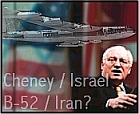


 The
The

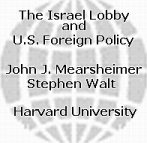
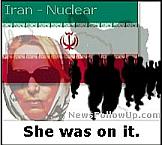 Plame,
damage assessment, WMD, Turkey
Plame,
damage assessment, WMD, Turkey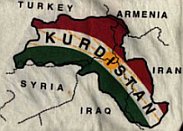

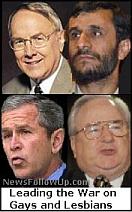
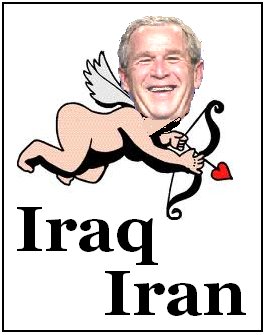


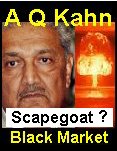
 Global Research
Global Research bomb
American cities, blame it on Castro, 1962, Bay of Pigs.
bomb
American cities, blame it on Castro, 1962, Bay of Pigs.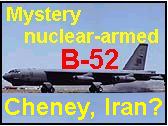
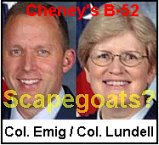
 Military
lies: Jessica
Lynch, Pat Tillman, tip of iceberg ... Abu Ghraib ...on and
on. dosing black men with Syphilis, children with
radioactive isotopes and military officers and random citizens
with LSD were all considered tin-foil fodder, have all proven
to be true.
Military
lies: Jessica
Lynch, Pat Tillman, tip of iceberg ... Abu Ghraib ...on and
on. dosing black men with Syphilis, children with
radioactive isotopes and military officers and random citizens
with LSD were all considered tin-foil fodder, have all proven
to be true.  Adelman,
Ken,
Adelman,
Ken, 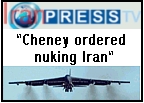




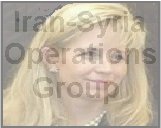 Iran-Syria Operations
Group, Iran Attack? Elizabeth Cheney.
Iran-Syria Operations
Group, Iran Attack? Elizabeth Cheney.
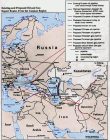 Middle
East Map
Middle
East Map


